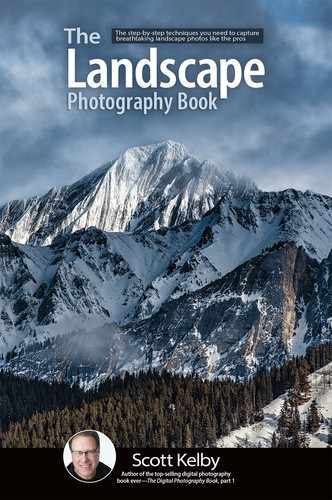You’ll Need a Graduated ND Filter

There are two ND (neutral density) filters that are mainstays with landscape photographers and this one, the neutral density gradient filter (simply called an “ND Grad” in landscape circles), is probably the most important of the two because it helps you overcome a sensor weakness. When you’re shooting landscapes, particularly during the day, because of the limited range of light that our cameras’ sensors can capture, your camera will either properly expose for the foreground, or for the sky, but it doesn’t have enough range to do both at once. So, you’re going to have to either make the foreground look right (making the sky washed out), or make the sky look right (but then your foreground winds up way too dark). The general rule is to meter (aim the center focus point in your viewfinder) so the foreground is properly exposed. But, to even things out, we put an ND Grad, which is dark gray at the top and gradually goes down to transparent about halfway down, in front of our lenses. This darkens the sky, and by the time the gradient gets down to the foreground in the frame, it’s transparent, so it doesn’t make your foreground darker, as well. If you look at the filter itself, it looks like a clear piece of glass (or Plexiglass), with a gradient over the top half. You want to line up the bottom of the gradient with the horizon line (this is a big limitation of using a round ND Grad—you can’t change the position of the bottom of the gradient, so you have to change your composition instead, which is not awesome). Also, you can order ND Grads that have a soft transition along the horizon to the transparent or a hard-edged transition (I always go with a soft ND Grad myself—it’s more forgiving on placement).
